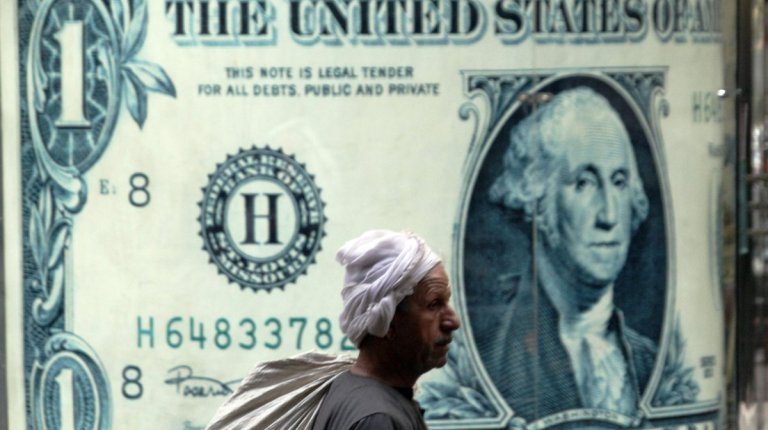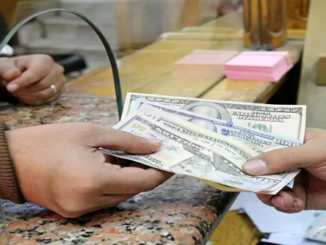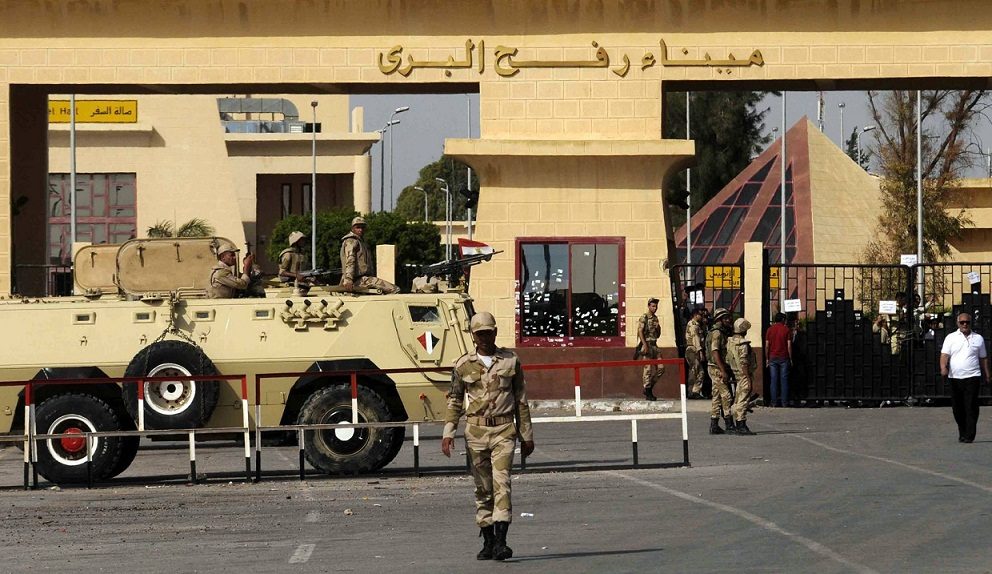
The exacerbation of Egyptian indebtedness during the reign of Sisi is only a sharp expression of a more extensive global economic crisis, according to Counterfire.
“Under the brutal regime of Abdel Fattah al-Sisi, Egypt has moved to the front ranks of a debt crisis that threatens catastrophic results for poor and oppressed countries across the globe,” says John Clarke in a piece on Counterfire, an NGO to combat poverty.
Egypt’s debt crisis is a symptom of the global impact the multiple crises of capitalism are having on the worlds’ poor, argues John Clarke.
By the end of the 2020/2021 fiscal year, Egypt’s total debt reached $392bn. That includes $137bn in external debt, which is four times higher than in 2010 ($33.7bn). It also includes $255bn in internal debt, according to the Central Bank of Egypt, almost double domestic debt in 2010.
While the greed and incompetence of the Sisi regime has contributed massively to the piling up of debt, the international loan sharks of global capitalism, centred in the imperialist countries, have driven the process in Egypt, as they have in dozens of other countries.
‘Most of the external debt between 2013 and 2022 came from the sale of bonds in the international market. It also came from borrowing from international institutions, such as the International Monetary fund (IMF), and international banks. Indeed, Egypt has become the IMF’s largest client after Argentina.’
As this debt has piled up, ‘the government has spent the bulk of its available revenues in recent years on megaprojects that have a symbolic rather than economic value.’
These expenditures include ‘the $58bn new administrative capital in the desert outside Cairo; weapons acquisitions, whose exact value is unknown but which have placed the country among the world’s top five arms purchasers; a $25bn nuclear reactor to produce power in a country with an electricity surplus; an $8bn expansion of Suez Canal capacity that has yet to generate a noticeable increase in transit dues, rising to only $5.8bn in 2020 from $5.6bn in 2017.’
Even as Egypt is compelled to devote $30.7bn out of a government budget of $93bn to debt servicing, it faces a harsh economic situation that compounds its problems.
Under the combined impact of the pandemic and the Ukraine conflict, interest rates have been driven up and the currency devalued. This has ‘caused food prices in the local market to shoot up, bringing in more suffering for tens of millions of people in a country where almost 70 percent of the population of more than 100 million depends on food rations.’
Though details haven’t yet been released, the IMF has reached an agreement with the Egyptian government on another loan, and it is reported that it involves a ‘comprehensive financial reform plan for the next 46 months.’ The deal also includes an agreement on the part of the Egyptian government to ‘improve its social safety net, and implement reforms that will enhance private-sector-led growth and job creation.’
We may be sure, however, that the reality behind this coded language is the standard IMF formula of privatisation, attacks on workers’ rights and the removal of subsidies on staple goods, in favour of sparse measures that supposedly protect the ‘most vulnerable.’
In the present dire situation ‘the Egyptian government has two bitter choices: either to accept the pressures of the IMF and enact more austerity measures to be shouldered by citizens, or to face the spectre of failing to repay its debts.’
Any third option will depend entirely on the resistance that emerges from workers and impoverished communities in Egypt and their refusal to have the burden of the crisis imposed on them.
The debt wall that Egypt has hit is only a particularly sharp expression of a much wider crisis that is continuing to intensify. ‘The UN has identified 54 developing economies with severe debt problems’, and these ‘represent 18% of the world’s population, and more than 50% of people living in extreme poverty.’
Among these hard-hit countries, some are ‘spending more on debt interest payments than on health, education and social protection combined.’
Beyond the very poorest countries, it is also reckoned that ‘about 60% of low-income countries and about 25% of emerging markets are either in debt distress or at high risk of it.’ It is clear that the present cost-of-living crisis, the driving up of interest rates, the threat of a global slump, and the worsening impacts of climate change are all working to ensure that this situation worsens in the period ahead.
For the grandees of the international financial order, the threat of debt defaults is a great concern. The situation facing poor people in indebted countries, however, is one of intensified poverty and starvation.
There can be no doubt that the only just and the absolutely necessary solution to this mounting crisis must be based on debt cancellation.
Global Action for Debt Cancellation points to ‘the continuing debt problem that stands in the way of people’s survival, the fight against inequality, the realization of their human rights, sovereignty and the self-determination of peoples, economic, gender and ecological justice, and the pursuit of a dignified life.’
It is hardly surprising that such dreadful impacts have resulted when over ‘$300 billion is being spent annually by the global south for Public External Debt payments to bilateral and multilateral lenders such as the World Bank and IMF, private banks, speculators and investors in government bonds and securities.’
Predictably, the lending institutions themselves have done precious little to address this appalling situation. The IMF has barely responded, while the Debt Service Suspension Initiative (DSSI) of the G20 countries has delayed the payment of a mere $5.3 billion.
At the same time, ‘Private lenders have so far refused to cancel or suspend any of the debt they claim. Similarly, multilateral development banks, such as the World Bank, have also failed to cancel debt.’
The burden of debt is but one dreadful expression of the weight of imperialism on poor countries, and the forms of exploitation that this creates. At the same time as this plundering goes on, the impacts of the crises of global capitalism are imposed on poor countries.
The pandemic has spread across the world with access to vaccines effectively denied to people in many parts of the Global South. Poor countries face the full force of climate change, as the recent disastrous floods in Pakistan, that displaced 33 million people, demonstrate with dreadful clarity. Yet, as this horror unfolds, that country is responsible for less than 1% of global carbon emissions.
The recent farcical deliberations of the COP27 gathering, which ironically took place in Egypt, saw no progress in reducing emissions and produced only a vague assurance that a ‘loss and damage’ fund would be created to respond to the far greater impacts of climate change on poor countries.
This empty promise comes from the leaders of the same imperialist countries whose banks and lending institutions are sucking massive interest payments from countries that face extreme poverty and the threat of famine.
The cancellation of this brutal and exploitative debt burden must be pressed as an urgent demand by working-class movements all across the planet.



